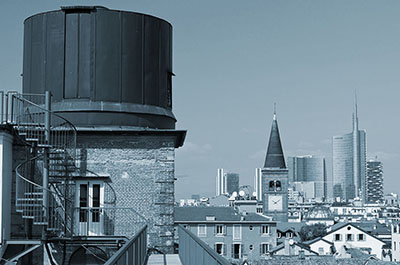
On September 1st 2020 the MARSS – MusAB in Augmented Reality from Science to Society – project kicked off. The project is funded by the Fondazione Cariplo within the framework of the call “Environments of cultural innovation – 2019”. The project will be carried out at the Museo Astronomico di Brera (MusAB) by the project leader INAF – Osservatorio Astronomico di Brera, in collaboration with the Mechanical Engineering Department of Politecnico di Milano.
The MusAB is the museum collection of the INAF, the Italian National Institute for Astrophysics, exhibited inside the Osservatorio Astronomico di Brera, accredited by Regione Lombardia,founded in 1764 at the Jesuit boarding school in Brera. The Osservatorio is the oldest scientific institution in Milan and is today part of the INAF, the Italian research institute for astrophysics and cosmology known worldwide for being one of the top research centres.
The museum collection consists of scientific instruments used by astronomers dating back to 250 years, along with an archive full of well-preserved documents and a library with 35,000 ancient books: an outstanding evidence of the scientific and cultural activity carried out in this city. Moreover, the famous Cupola Schiaparelli is also part of the MusAB. From this dome built on top of the Osservatorio, Giovanni Virginio Schiaparelli, former manager of the Osservatorio from 1862 to 1900, looked at Mars through the Merz telescope and drew the very first maps of the planet. The dome, along with the telescope, has recently been restored, so today visitors are again allowed in during guided tours.
In spite of its historical and scientific significance, the MusAB current exhibition, designed in 1996, is affected by some limits, both in terms of visitor’s experience and of exhibition conception. For these reasons, the main goal of the MARSS project is to set up an innovative exhibition using digital technologies to support the storytelling, focusing the visitor’s attention on the importance of the scientific instruments and related activities by making the visit interactive and more engaging.
The new exhibition will allow a more detailed and visitor-friendly experience inside the MusAB. The new interactive experience will be designed and developed to accompany the visitor throughout the whole collection through new narrative paths, also highlighting logical connections between instruments. The use of Augmented Reality and Virtual Reality environments and experiences, developed by the research group of the Mechanical Engineering Department of Politecnico di Milano, will turn the exhibition visit into an interactive experience.
In particular, the Augmented Reality experiences will deliver new information about the exhibited instruments, brought out during specific narrative paths. Meanwhile, Virtual Reality will allow more visitors to visit the Schiaparelli Dome and get a closer look at Schiaparelli’s activity and research overcoming the limited number of people allowed inside at a time for security reasons.
The leader of the DMECPolimi research group working on this project is Dr. Marina Carulli, supported by Prof. Monica Bordegoni and Prof. Giandomenico Caruso.
